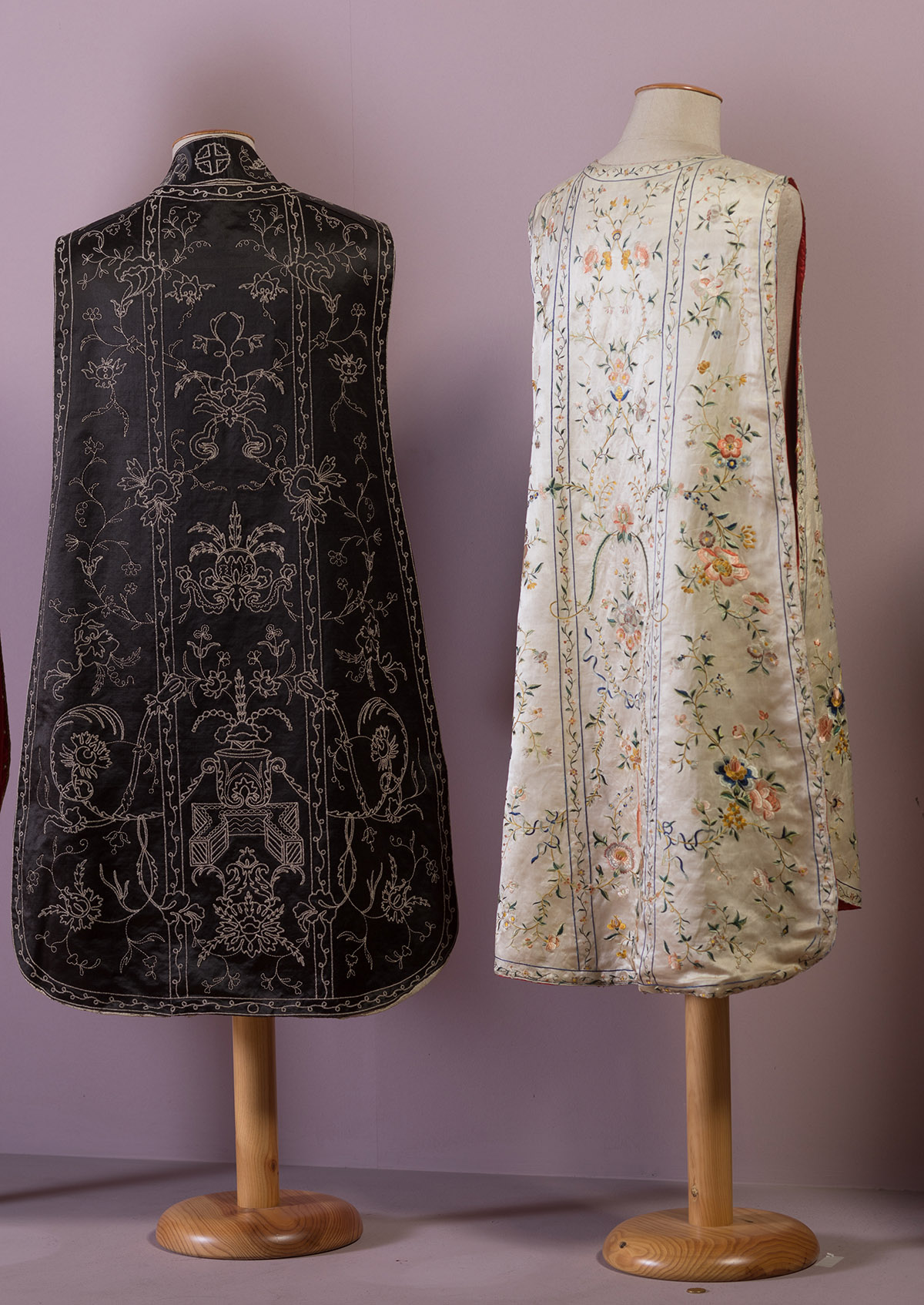Philippine vestments
Philippine vestments
The cathedral has an interesting collection of Philippine vestments produced in the late 18th and early 19th centuries. They were donated by Francisco Díaz de Durana, Dean of the Cathedral of Manila and Vicar General of its Archbishopric, and have been considered exceptional ornaments ever since their arrival at the collegiate church, reserved for the most important services. He also sent other sets to his home town, Durana, and to other towns, such as Otxandio and Eribe. Judging by their inscriptions, they must have been acquired at two different times, the first batch before 1776 and the second shortly before 1805.
Most of these embroideries were made in Canton, Fujian and the Philippines, although always produced by the hands of Chinese workers. They were executed in silk and were richly decorated with embroidery in gold, silver and silk threads of different colours. Liturgical vestments used repertoires inspired by nature with some additional Christian symbol or emblem.
Locution
Ficha técnica
BASIC BIBLIOGRAPHY
AZCÁRATE RISTORI, José M.ª de. “Catedral de Santa María (catedral Vieja)”. En: PORTILLA VITORIA, Micaela J. et al. Catálogo Monumental Diócesis de Vitoria: Ciudad de Vitoria. Vitoria-Gasteiz: Obra Cultural de la Caja de Ahorros Municipal, tomo III, 1968, p. 111.
BARTOLOMÉ GARCÍA, Fernando R. “Ornamentos filipinos de la catedral de Santa María de Vitoria-Gasteiz y otros conjuntos alaveses”. Ars Bilduma, 3, 2013, pp. 81-104.
ERKIZIA MARTIKORENA, Aintzane; Itziar AGUINAGALDE LÓPEZ. El Museo Diocesano de Arte Sacro y su colección. Vitoria-Gasteiz: Museo Diocesano de Arte Sacro, 2020. pp. 100-101.




